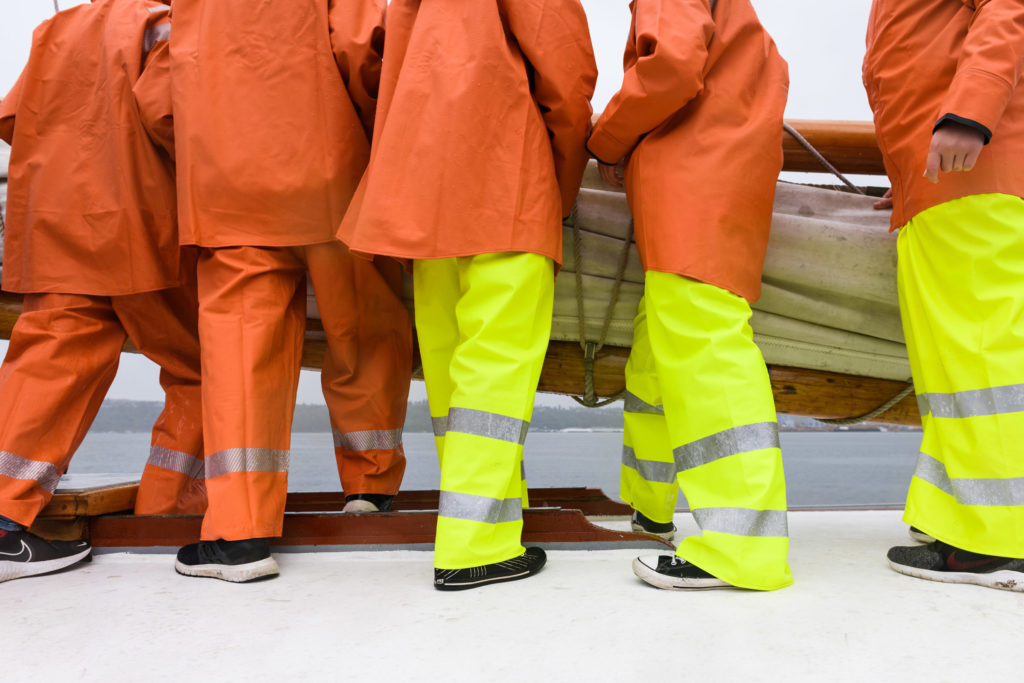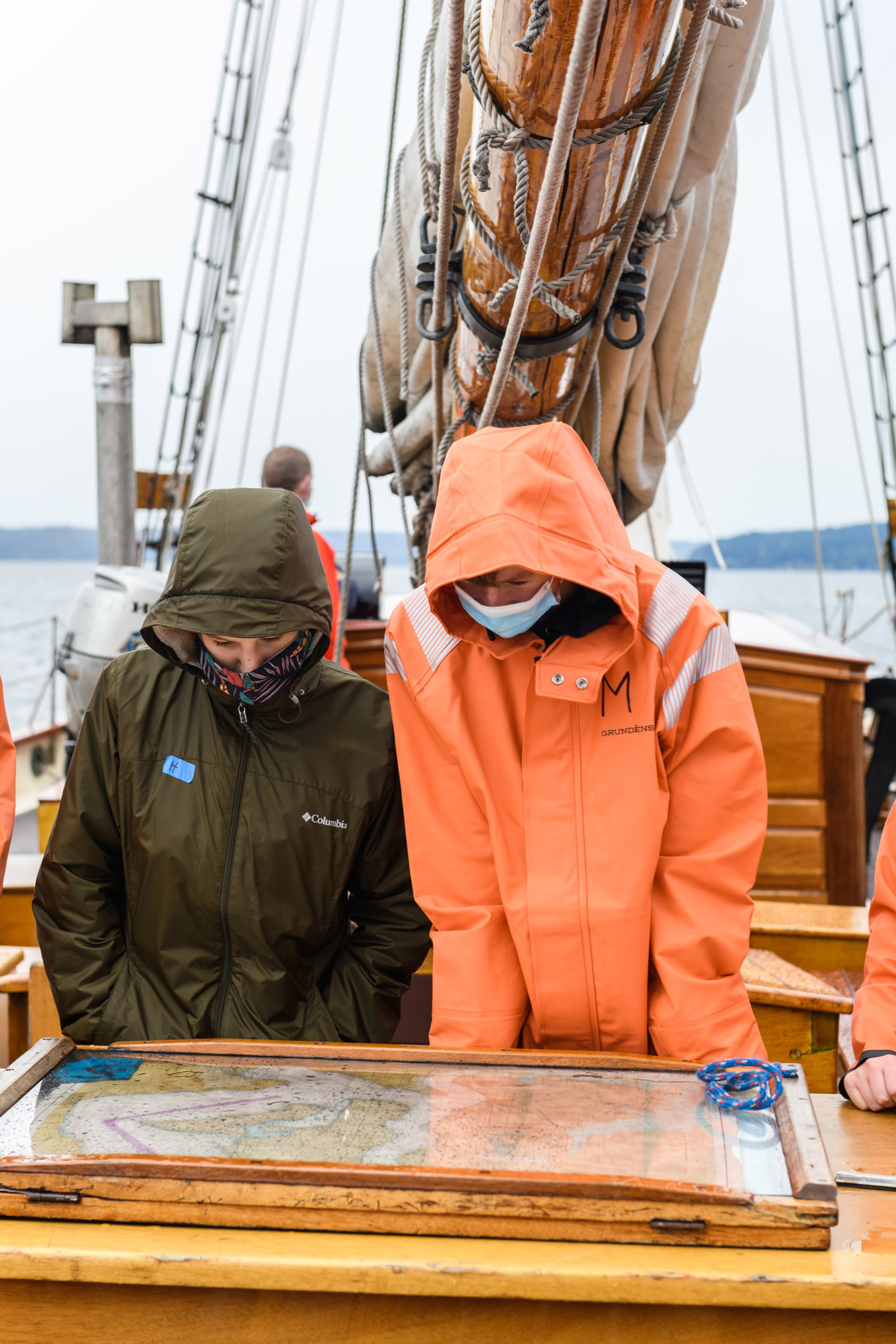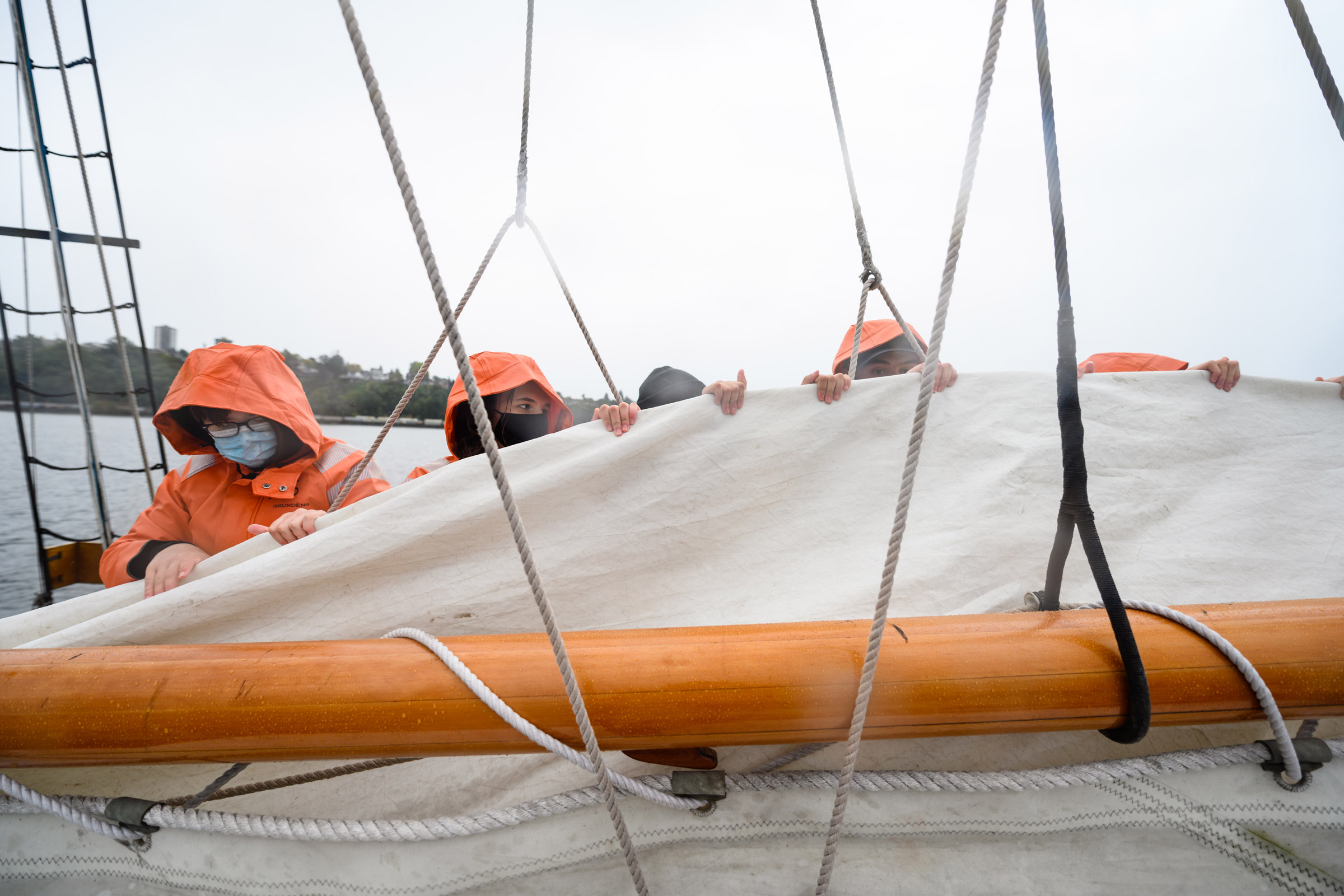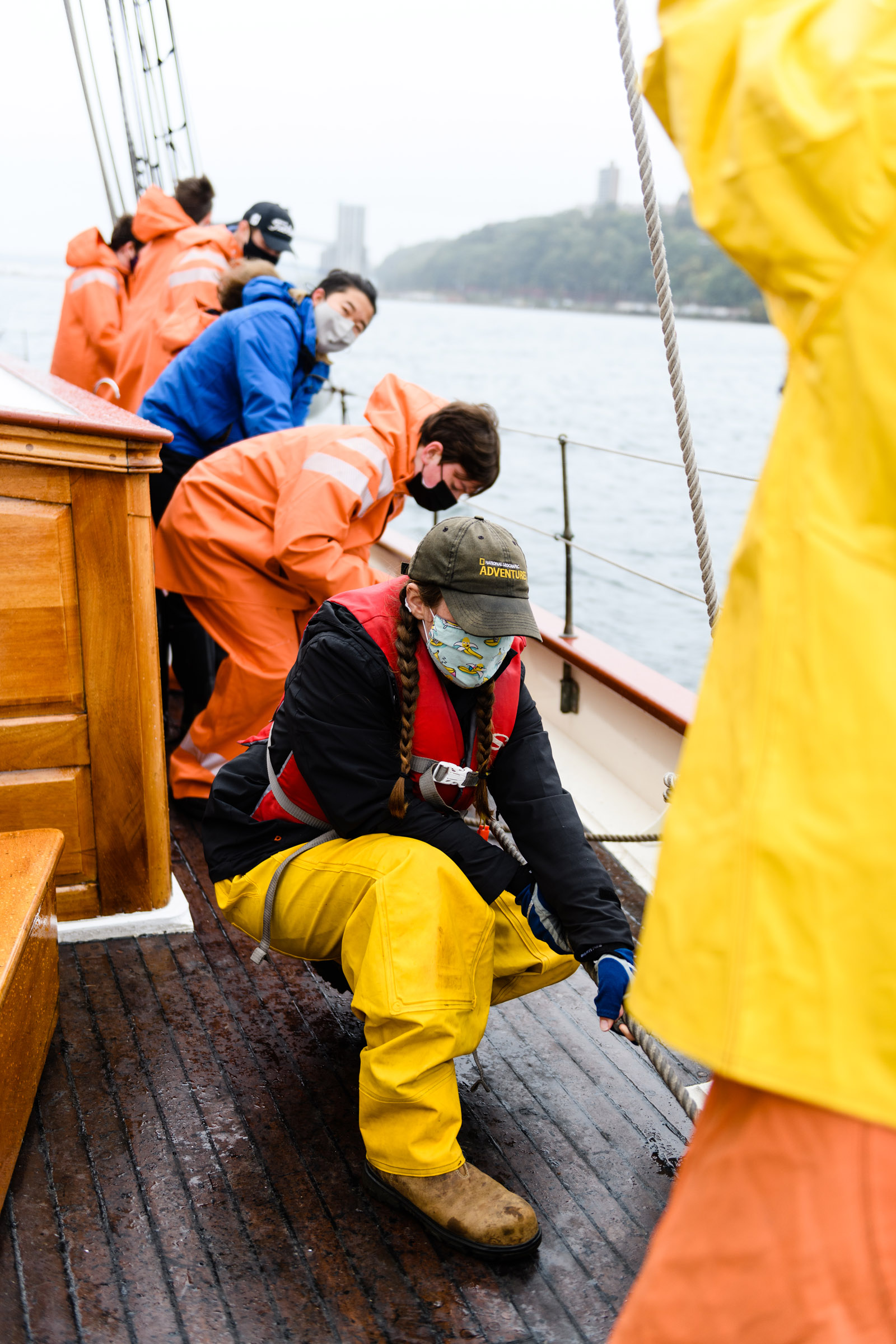
Every school morning, the alarm sounds at 5:20 a.m. for 14-year-old Chloe Hedge-Pollock as she shakes off sleep, gets dressed, and hustles out the door by 6:20 so that she and her family can travel from their home in Port Orchard and catch the ferry to Fauntleroy. After docking and dropping off her brother at school in West Seattle, the remaining mother-daughter duo continue on to Des Moines, where the 9th grader hops out of the car, walks through the campus doors, and heads to class.
Though noteworthy in itself, the lengthy commute to school is not the only thing that distinguishes Hedge-Pollock’s high school experience. It’s also differentiated by the academy she attends. Hedge-Pollock is one of the 37 students currently enrolled in the new Maritime High School, an innovative public program that was kick-started in September and is now sailing through the 2021-2022 school year with its first class. Run by the Highline School District in collaboration with several community partners including the Northwest Maritime Center in Port Townsend, Port of Seattle, and the Duwamish Community River Coalition, the school aims to educate students about the local maritime industry through hands-on, project-based learning in marine sciences and environmental studies—all while creating internship opportunities and access to jobs in the field after graduation.
“Our goal is simple, yet powerful: to connect our students to their callings,” explains Principal Tremain Holloway, a Harvard alum who was tapped to lead the school after a stint with Highline’s similarly structured Raisbeck Aviation High School. “And the experiences we provide really open the students’ eyes to the potential callings that exist for them right here in their own community.”
It was the community’s proximity to the maritime industry and the industry’s future need that spawned the idea for the program in the first place. Jake Beattie, executive director for Northwest Maritime Center, attended a conference in 2019 with about 80 other maritime professionals plus Port of Seattle Commissioners Fred Felleman and Ryan Calkins, and recalls the discussion centered around a question that’s been looming large for almost 20 years: Where is the next generation of workers going to come from?
There has been much discussion, both regionally and nationally, over the coming silver tsunami as the baby boomer generation retires from the workforce, and in maritime that wave looks to be larger than most. Additionally, Commissioner Calkins estimates there are 60,00 direct maritime jobs based in Seattle alone, encompassing everything from shipbuilding to tourism.
Of all the possible answers bandied about, it was the idea for a school that would introduce the workers of tomorrow to the many available family wage jobs within maritime that soon rose to the top of the class. “When he [Calkins] first proposed it, I immediately raised my hand and said, ‘We’re in’,” says NMC’s Beattie. “Quite enthusiastically so, I might add.”
With NMC and several other maritime partners onboard, the Highline School District was a natural pick to take the helm of the educational portion due to its success in launching the aforementioned aviation school and the district’s diverse student body that would provide a wide net of possible students. (The school is open to any student in the Puget Sound region that wishes to apply with 51% of the seats reserved for students who live within the boundaries of the Highline school district.)
“Eighty percent of our population is non-white and most of our students live within 5 miles of the water. But traditionally, maritime has not been an industry they are familiar with or necessarily one they have had easy access to,” explains Holloway.
Many of the students’ first introductions are made outside of the classroom, in immersive settings throughout the Puget Sound, and some are seeing the view from the water for the first time ever. “At one of our early All Aboard events, one student kept putting his hands in the water and when asked why, he replied that he just wanted to know what saltwater felt like,” recalls Holloway. “It’s been amazing to see these kids get outside of the classroom, get out on the water, and discover new things about the place they call home.” Other outings have included: a voyage planning lesson aboard NMC’s 40-foot-long Admiral Jack passenger ferry; navigation studies with the crew of the schooner Adventuress; and learning about the efforts to clean the waters of the Duwamish River by traveling along and on it. This spring, students will head back to Port Townsend to learn how to pilot the Admiral Jack and even earn hours towards their captain’s licenses.
Back on campus, students work on their classroom learning through a variety of projects and are encouraged to follow their passions through personalized plans designed in collaboration with their teachers and advisors.
For Chloe Hedge-Pollock—a self-described beach lover and marine animal aficionado—that has meant spending extra time caring for the fish in the school’s tilapia lab. A real-life aquaponics system, the lab’s tanks are connected to water-filled trays, where each student tends to either a plant or vegetable fertilized by the waste bi-products created by the tilapia. An avid surfer, Hedge-Pollock is also looking forward to being the design leader of a team project to construct a three-person canoe this semester. Students are working in teams of ten to first build model craft, then construct the finished designs out of marine plywood, which they will test out on the river.
“I love being out on the water,” says Hedge-Pollock, who is also a member of a varsity sailing team in Gig Harbor, a passion she found after attending summer camp and one that has only grown over the course of the year at MHS. “It feels very accomplished to be able to use a boat how it’s supposed to be used, to control the speed, the pace, everything.”
It’s little wonder then that her eyes are even more alight as she recalls a Zoom presentation from a few of the women engineers and scientists aboard the University of Washington’s research vessel, Nautilus. “They told us about their efforts mapping the ocean floors all around the world, and I just thought that would be the coolest job ever,” she says, stating that one of her goals now is to score an internship on the vessel. “And we get to meet so many people like that, from so many different career paths, it’s really an awesome opportunity.”
It’s the eye-opening moments like these that have Principal Holloway convinced that the school will grow in the years to come. Maritime High School recently wrapped up applications for the 2022-2023 school year, and will scale up the class sizes each year. At full capacity, Holloway expects to have between 400-450 students enrolled, which potentially means hundreds of more workers flowing into the field, and more opportunities for women and people of color, too. “We really celebrate our students, no matter what they decide to do after high school,” he concludes. “While they’re here with us, we are going to give them hope, inspiration, and the power to choose who they want to be. I like to think of it as connecting those in need of power to those in power.”
>> For more information on Maritime High School, visit: maritime.highlineschools.org.




